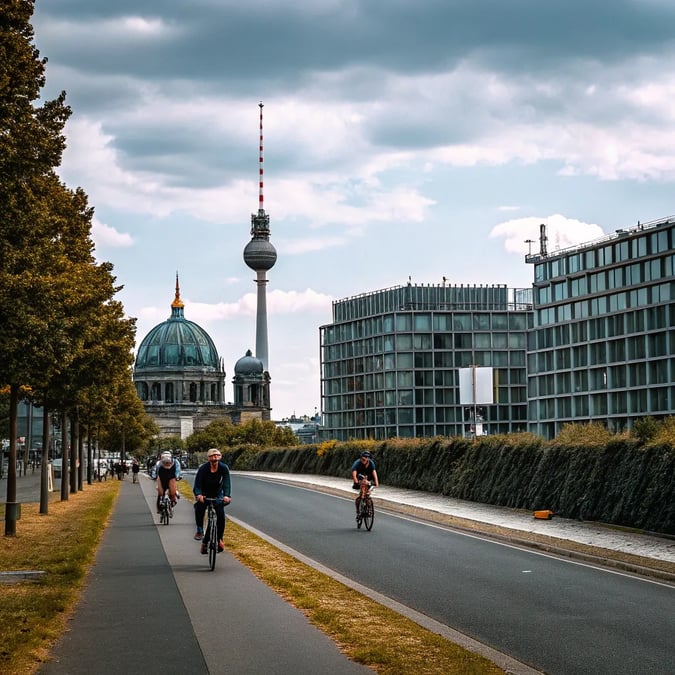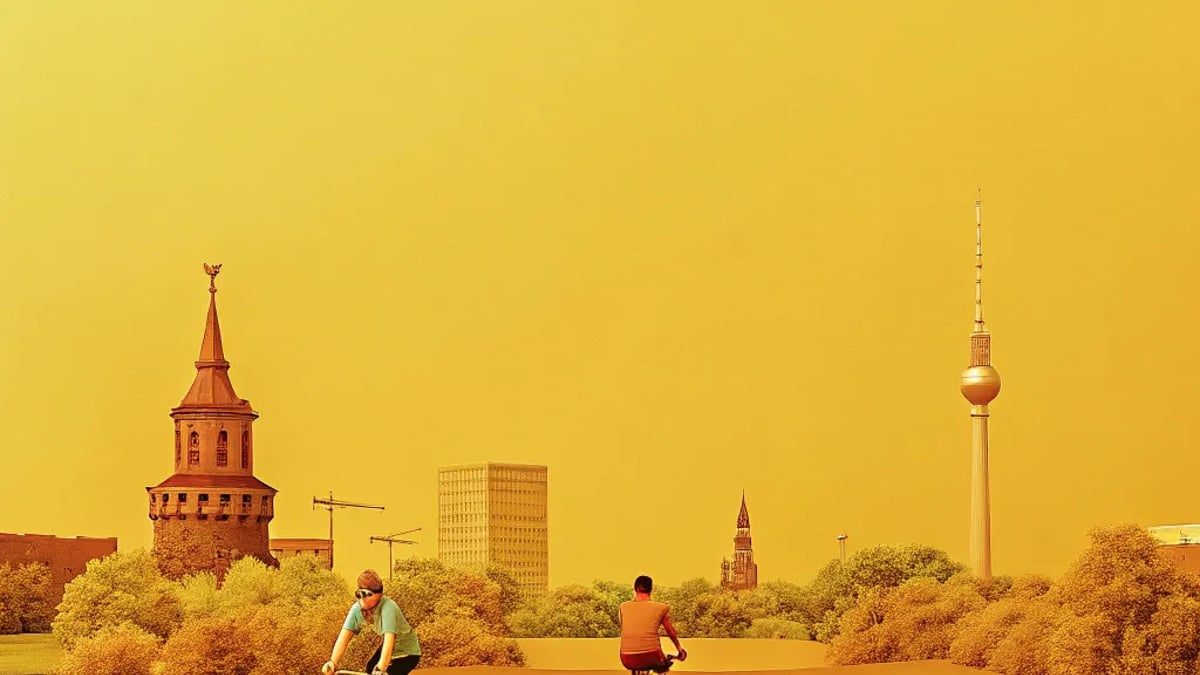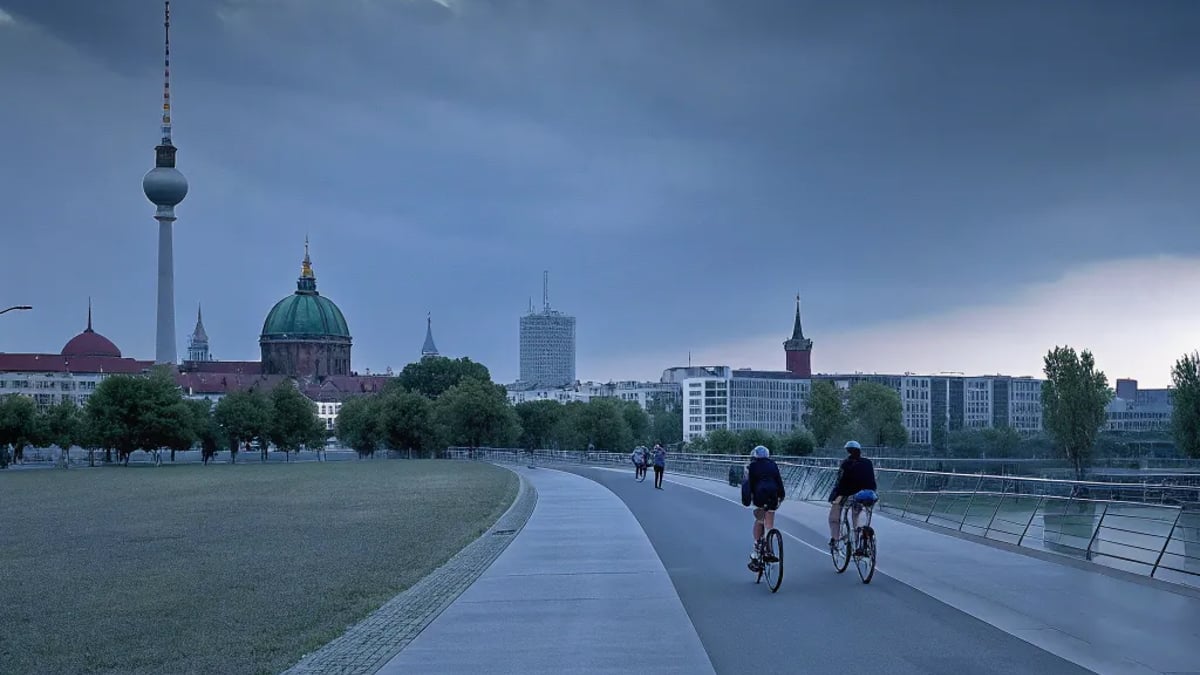
Berlin, with its extensive network of over 620 kilometers of dedicated cycling paths, has established itself as one of Europe's premier cycling cities. The German capital offers urban riders an impressive mix of historical routes, nature-filled paths, and practical commuter lanes that make exploring the city on two wheels both enjoyable and efficient.
Berlin's Cycling Culture: A Brief Overview
Berlin's relationship with cycling runs deep. Unlike many European capitals that adapted to accommodate bikes later in their development, Berlin has integrated cycling into its urban planning for decades. This forward-thinking approach has created a city where bikes aren't just tolerated—they're celebrated.
"Berlin's cycling infrastructure isn't perfect, but it's incredibly comprehensive," notes urban planning expert Klaus Weber in a recent city mobility forum. "The city continues to invest in expanding and improving bike paths each year."
The cycling culture here differs notably from Amsterdam's often crowded lanes or London's sometimes tense car-bike relationships. Berlin offers more space, varied terrain, and a generally relaxed attitude toward cyclists that makes it particularly appealing for both locals and visitors.

The Mauerweg (Berlin Wall Trail)
Perhaps no cycling route captures Berlin's complex history better than the Mauerweg. This 160-kilometer path traces the former route of the Berlin Wall, taking riders through an outdoor history lesson while providing stunning urban and rural landscapes.
Historical Significance
The Mauerweg isn't just scenic—it's deeply meaningful. Cycling along this route, you'll pass historical markers, memorial sites, and preserved sections of the wall that once divided the city. Information panels along the way provide context about life during Berlin's divided years.
The trail is well-marked with distinctive signs featuring a circular logo, making navigation straightforward even for visitors. While you could technically complete the entire route in a day with serious effort, most riders break it into sections, with the central portions being most popular for casual urban cyclists.
I attempted the full route last summer but only managed about half before the weather turned. Even that partial journey provided an incredible perspective on how the wall shaped Berlin's development.

Tiergarten Park Paths
For urban riders seeking a green escape without leaving the city center, Tiergarten offers Berlin's equivalent to New York's Central Park—but with superior cycling infrastructure.
The park's wide, well-maintained paths cut through 520 acres of lush landscape, providing a refreshing contrast to the surrounding urban environment. Numerous routes crisscross the park, allowing for rides ranging from quick 15-minute cruises to longer explorations.
What makes Tiergarten especially appealing is how it connects to other cycling routes. You can easily link your park ride to paths along the Spree River or connect to the popular route heading west toward Charlottenburg Palace.
During spring weekends, the paths can get crowded with pedestrians and other cyclists, so early morning rides provide the most peaceful experience. The southwestern section near the Berlin Philharmonic typically sees less foot traffic, making it ideal for those seeking a quieter ride.
The Spree River Path
Following Berlin's primary waterway, the Spree River path offers one of the most picturesque urban rides available in any European capital. This relatively flat route provides stunning views of Berlin's architectural highlights while keeping riders largely separated from motor traffic.
Highlights Along the Route
The eastern portion begins near Treptower Park and winds past the East Side Gallery—the longest remaining section of the Berlin Wall, now covered in murals by artists from around the world. Continuing west, you'll pass Museum Island, the Berlin Cathedral, and the government district including the Reichstag building with its famous glass dome.
The path isn't completely continuous, with some sections requiring brief detours onto streets, but recent improvements have eliminated many of these interruptions. The western portion beyond Tiergarten becomes especially scenic as the river widens and the path becomes less crowded.
"What I love about the Spree path is how it showcases both Berlin's historical architecture and its modern developments," says Maria Schmidt, a local cycling guide. "You can literally trace the city's evolution through different eras as you ride."
Tempelhofer Feld: Urban Freedom
Where else can you cycle on a former airport runway in the middle of a major city? Since closing to air traffic in 2008, Tempelhof Airport has transformed into one of Berlin's most unique public spaces and a cyclist's paradise.
The massive open field offers over 950 acres of uninterrupted, perfectly flat terrain—ideal for cyclists of all abilities. The former runways provide extraordinarily wide paths where riders can build speed without worrying about obstacles or pedestrian conflicts.
Beyond the runways, a network of smaller paths circles the perimeter, connecting to community gardens, recreational areas, and historical sites including preserved airport buildings. The southern edge features a dedicated cycling track separate from the walking path, perfect for those wanting a more structured ride.
I often bring visiting friends here for their first Berlin cycling experience. The wide-open space makes it non-threatening for nervous riders, while the historical significance adds depth to what might otherwise be just a pleasant park ride.
How Do Berlin's Bike Paths Compare to Other Cities?
Berlin's cycling infrastructure stands out for several reasons when compared to other major cycling cities. Unlike Amsterdam's sometimes crowded and complex network, Berlin's paths generally offer more space and simpler navigation. The city's relatively flat topography also makes it less challenging than hilly capitals like Lisbon or Rome.
What Berlin lacks in the comprehensive coverage of Copenhagen's cycling network, it makes up for with variety. Within a single day, you can ride through dense urban areas, expansive parks, historical sites, and along peaceful waterways—a diversity of experiences that few other cities can match.
The city continues to invest in improving its cycling infrastructure, with recent additions including more protected bike lanes and bicycle highways designed for commuters. These "Radschnellwege" (fast bike paths) aim to connect outlying areas to the city center with minimal interruptions from cross traffic.
Practical Tips for Urban Riders in Berlin
Bike Rental Options
For visitors, Berlin offers numerous bike rental options ranging from budget-friendly to premium. Companies like Donkey Republic provide app-based rentals with convenient pickup locations throughout the city, while traditional bike shops often offer better quality rides for multi-day rentals.
The city's bike-sharing system, Nextbike, provides an affordable option for short trips with stations throughout central Berlin. However, their standard bikes can be heavy and less comfortable for longer scenic routes.
Safety Considerations
While Berlin is generally bike-friendly, it's important to understand local cycling etiquette:
- Always use hand signals when turning
- Respect dedicated pedestrian areas, particularly in parks
- Be cautious at tram tracks, which can catch bike tires
- Use bike lights after dark (legally required and strictly enforced)
Most main roads have dedicated cycling lanes, but their quality varies. Some are separated from traffic by physical barriers, while others are simply painted lanes. When possible, opt for routes with protected infrastructure, especially if you're new to urban cycling.
Best Seasons for Scenic Riding
Berlin experiences distinct seasons, each offering different cycling experiences:
- Spring (April-May): Comfortable temperatures and blooming parks make this perhaps the ideal season
- Summer (June-August): Long daylight hours allow for extended evening rides, but popular routes can become crowded
- Fall (September-October): Stunning foliage in Tiergarten and other parks creates picturesque riding conditions
- Winter (November-March): Significantly colder with occasional snow, but dedicated paths are generally well-maintained
I've found early autumn weekday mornings to be the perfect time for photography-focused rides—the light is beautiful, the summer tourists have departed, and the paths are relatively empty.
Connecting with Berlin's Cycling Community
For those staying longer or looking to meet fellow cyclists, Berlin offers numerous group rides and cycling events. The Critical Mass ride occurs on the last Friday of each month, drawing thousands of participants for a celebratory tour through the city.
Various bike shops organize weekly themed rides ranging from architectural tours to sunset cruises. Websites like Berlin on Bike list upcoming events and provide forums where visitors can connect with local cycling enthusiasts.
Conclusion: Berlin's Unique Cycling Appeal
What makes Berlin truly special for urban cyclists is how the city's complex history, cultural diversity, and commitment to green spaces converge to create uniquely rewarding riding experiences. The bike paths here don't just connect destinations—they tell stories, showcase contrasts, and provide perspectives on the city that other forms of transportation simply can't match.
Whether you're commuting daily or visiting for a weekend, Berlin's cycling infrastructure offers accessible adventures for riders of all abilities. As the city continues expanding its already impressive network of paths, the experience will only improve in the coming years.
Disclaimer: This content is provided for informational purposes only. Always follow local traffic laws and safety guidelines when cycling. Consider consulting with local cycling organizations or tour operators for the most current information about routes and conditions.
Tags

About Rafael Mendoza the Author
Rafael Mendoza, an avid cyclist and urban planner, has dedicated over a decade to mapping out safe and efficient cycling routes in bustling city environments. His extensive research and hands-on experience make him a leading expert in transforming urban landscapes into cyclist-friendly spaces.
Recommended Articles
TV Series Returning in 2026 After Initial Cancellation
Exciting revivals of beloved TV series are set for 2026, showcasing the evolving landscape of television and fan engagement.
Exploring Approaches to Modern Parenting Challenges
Discover innovative strategies for tackling modern parenting challenges and nurturing emotional well-being in today's complex family dynamics.
Eyelid Dermatitis Explained: Symptoms, Causes, and Solutions
Discover eyelid dermatitis, its symptoms, causes, and effective solutions to manage and treat this uncomfortable skin condition.
Eyelid Dermatitis Triggers That May Be Lurking in Your Routine
Discover common eyelid dermatitis triggers in your daily routine, from skincare products to allergens, and learn how to manage your symptoms effectively.
The Best Foods to Strengthen Your Bones as You Age
Discover the best foods that promote bone health as you age, focusing on essential nutrients like calcium and vitamin D for stronger bones.




